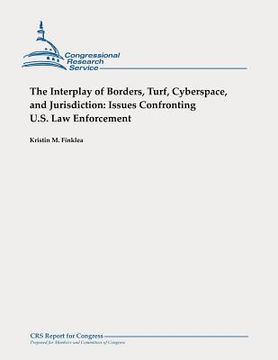The Interplay of Borders, Turf, Cyberspace, and Jurisdiction: Issues Confronting U.S. Law Enforcement (en Inglés)
Reseña del libro "The Interplay of Borders, Turf, Cyberspace, and Jurisdiction: Issues Confronting U.S. Law Enforcement (en Inglés)"
Savvy criminals constantly develop new techniques to target U.S. persons, businesses, and interests. Individual criminals as well as broad criminal networks exploit geographic borders, criminal turf, cyberspace, and law enforcement jurisdiction to dodge law enforcement countermeasures. Further, the interplay of these realities can potentially encumber policing measures. In light of these interwoven realities, policy makers may question how to best design policies to help law enforcement combat ever-evolving criminal threats. Criminals routinely take advantage of geographic borders. They thrive on their ability to illicitly cross borders, subvert border security regimens, and provide illegal products or services. Many crimes-particularly those of a cyber nature-have become increasingly transnational. While criminals may operate across geographic borders and jurisdictional boundaries, law enforcement may not be able to do so with the same ease. Moreover, obstacles such as disparities between the legal regimens of nations (what is considered a crime in one country may not be in another) and differences in willingness to extradite suspected criminals can hamper prosecutions. The law enforcement community has, however, expanded its working relationships with both domestic and international agencies. Globalization and technological innovation have fostered the expansion of both legitimate and criminal operations across physical borders as well as throughout cyberspace. Advanced, rapid communication systems have made it easier for criminals to carry out their operations remotely from their victims and members of their illicit networks. In the largely borderless cyber domain, criminals can rely on relative anonymity and a rather seamless environment to conduct illicit business. Further, in the rapidly evolving digital age, law enforcement may not have the technological capabilities to keep up with the pace of criminals. Some criminal groups establish their own operational "borders" by defining and defending the "turf" or territories they control. Similarly, U.S. law enforcement often remains constrained by its own notions of "turf"-partly defined in terms of competing agency-level priorities and jurisdictions. While some crimes are worked under the jurisdiction of a proprietary agency, others are not investigated under such clear lines. These investigative overlaps and a lack of data and information sharing can hinder law enforcement anti-crime efforts. U.S. law enforcement has, particularly since the terrorist attacks of September 11, 2001, increasingly relied on intelligence-led policing, enhanced interagency cooperation, and technological implementation to confront 21st century crime. For instance, enforcement agencies have used formal and informal interagency agreements as well as fusion centers and task forces to assimilate information and coordinate operations. Nonetheless, there have been notable impediments in implementing effective information sharing systems and relying on up-to-date technology. Congress may question how it can leverage its legislative and oversight roles to bolster U.S. law enforcement's abilities to confront modern-day crime. For instance, Congress may consider whether federal law enforcement has the existing authorities, technology, and resources-both monetary and manpower-to counter 21st century criminals (particularly cybercriminals, e.g., S. 2105, S. 3414). Congress may also examine whether federal law enforcement is utilizing existing mechanisms to effectively coordinate investigations and share information.

